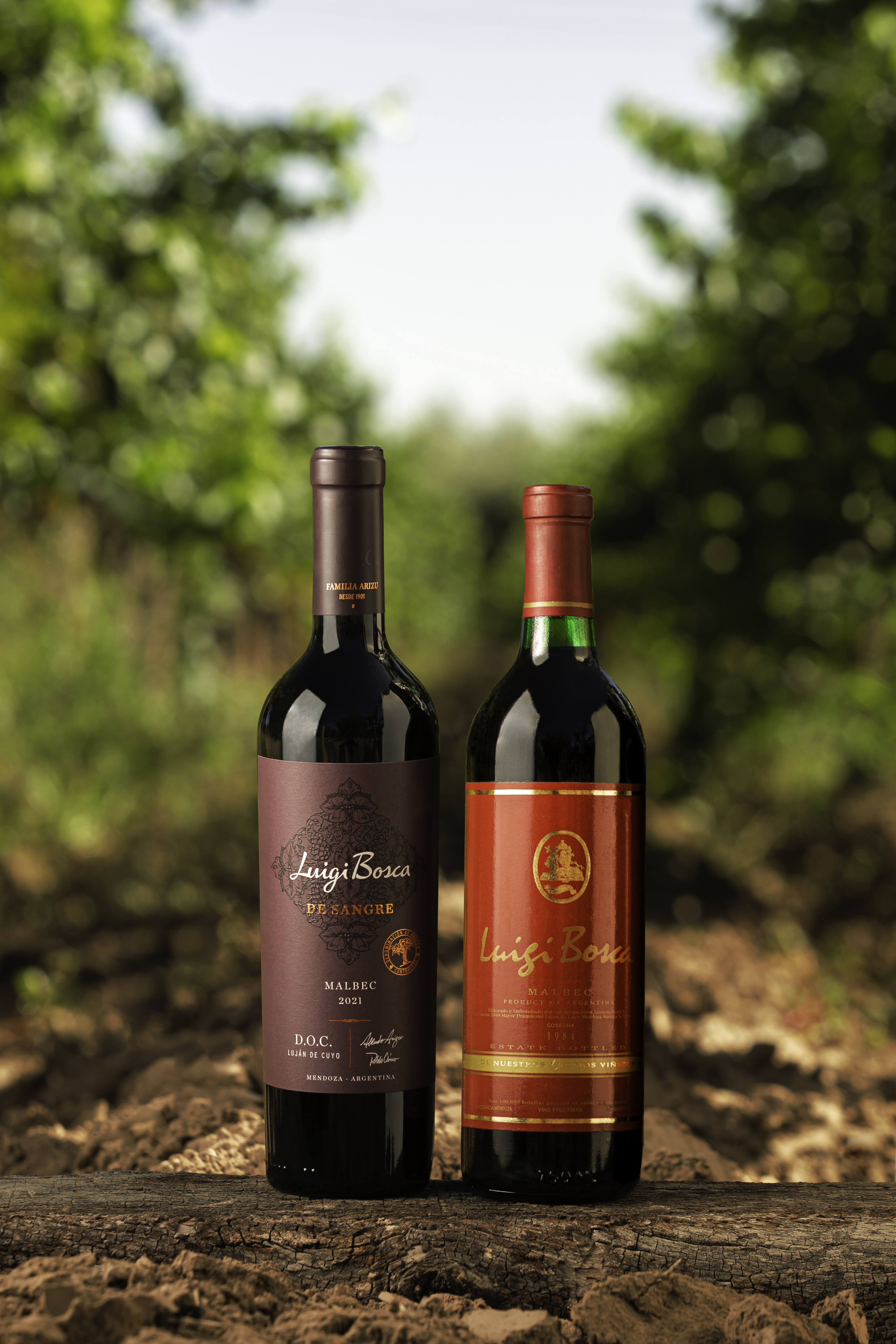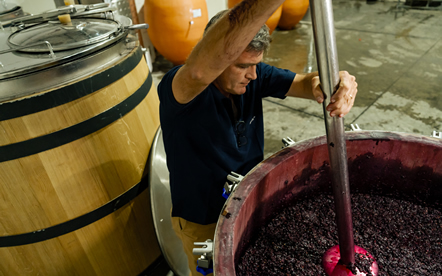
“Malbec chose us, rather than us choosing Malbec”
Malbec is a noble grape, often linked to kings and princes. Originated in France and extended through the Roman Empire, this variety has quite a fascinating history. The variety is sourced from Cahors, a region located in the southwest of France, 70 kilometers to the north of Toulouse. In the framework of World Malbec Day, Alberto Arizu (h), CEO and fourth generation of Bodega Luigi Bosca and former President of Wines of Argentina, makes a historical review of the variety and reflects on its past, present and future. Malbec is a noble grape, often linked to kings and princes. Originated in France and extended through the Roman Empire, this variety has quite a fascinating history. The variety is sourced from Cahors, a region located in the southwest of France, 70 kilometers to the north of Toulouse. People cultivated this variety in honor of the region’s name, crafting wines known as “Cahors wines.” It gained importance during the Middle Ages and spanned an area of approximately 60,000 hectares in the southwestern region of Bordeaux. However, one queen, Eleanor of Aquitaine, was particularly fond of this variety, and she was instrumental in spreading its flavors beyond the borders of France. Known for hosting extravagant parties that exalted the courteous love of gentlemen for their ladies, Eleanor of Aquitaine was undoubtedly one of the most influential and significant women of the Middle Ages. These celebrations gave rise to the renowned “Tales of Malbec, intoxicated in their courts of love”. Eleanor of Aquitaine’s persuasion enthralled the English, who frequented the “dark places of Cahors” due to this magnificent variety’s deep hues and rustic taste. Moreover, the Malbec variety captivated a wider audience. In the late seventeenth century, Peter the Great, the Tsar of Russia, was a frequent consumer of the Malbec variety, and according to historical records, it contributed to the healing of his stomach ulcer. This ultimately resulted in the dissemination of the Malbec variety across the Russian Empire, particularly in the Crimean region, where people drank the wine during holy mass celebrations. However, Malbec did not begin to spread ‘until the mid-18th century due to the support provided by Empress Catherine the Great. Napoleon III’s directive in 1855 led to the designation of the Bordeaux region’s renowned wines as “Grands Crus Classes,” with Malbec playing a significant role as a blending grape and imparting boldness and color to the “clarets of the region.” Prior to the nineteenth century, Malbec was in all its splendor, but that all changed when the plague of Phylloxera struck a significant portion of the vineyards in France, destroying a vital extension of implanted vines and resulting in the extinction of numerous varieties, including Malbec. In 1850 approximately, Malbec was introduced to Argentina by Michel Aime Pouget, a French botanist whom Domingo Faustino Sarmiento met while serving as Chilean ambassador. Sarmiento ultimately hired him to oversee the Quinta Agronómica de Mendoza, the nation’s first agricultural school. The French model served as inspiration for a project that proposed planting new wine varietals to enhance the national wine industry, potentially marking the inception of organized viticulture as we know it today. This project was drafted on April 17, 1853, with the endorsement of the governor of Mendoza, Pedro Pascual Segura, with the objective of establishing the Quinta Normal and its School of Agriculture. Therefore, we observe World Malbec Day on this date, and each year, hundreds of cities across the globe are delighted by Malbec’s unique aromas, sweetness, and savory elegance. For us Argentines, it is a privilege to grow this treasure, which is patiently crafted into wines currently savored around the globe. For over a century, immigrants, including my great-grandfather, who arrived in our prosperous and thriving country in pursuit of new opportunities, cultivated Malbec thousands of kilometers from its origin. This late-harvested variety, which is prone to cold and lack of sunlight, thrived in Mendoza, where it found an ideal dry and sunny climate. “Malbec chose us, rather than us choosing Malbec,” was an expression I used to enjoy uttering. The immigrants, the majority from the Mediterranean, including members of my family who had been cultivating vines for generations, discovered within the vast varietals implanted that the heights of the mountain range, along with the diverse soils formed by the mountain’s dismemberment into various cones—including arid soils cultivated with snowmelt water—offered an ideal setting for the cradle of Malbec, which we celebrate today. Our Malbec can turn into a bold, well-structured, honest, straightforward wine with remarkable layers of fruit concentration. On the palate, it displays an intense, pungent character. Malbec embodies, I believe, the best flagship of red wine since it is straightforward, full-bodied, and without any acid or herbal edges. It is well supported by sweet and round tannins, underlined by aromas of mouth-coating ripe plums, grape syrup, and jam. Because of these characteristics, it has excellent aging potential. In recognition of these exceptional qualities and with a dazzling vision, a group of renowned vine growers, including my father, Alberto Arizu, and Raúl de la Mota, founded the first Controlled Designation of Origin in America in 1989. The Controlled Designation of Origin of Luján de Cuyo, the cradle of great Malbecs, was undoubtedly those Malbecs that conquered the world starting in the 1990s. Currently, Malbec encompasses nearly 50% of our total exports and has a global presence in 126 countries, earning worldwide renown as the most renowned product from Argentina. This, in turn, positioned our country as a prominent player among global exporters. Nevertheless, Malbec consumption accounts for only 3% of all varietals, highlighting Argentina’s extraordinary potential to further develop and expand its viticulture, primarily guided by its exporters. Argentina clearly offers more than Malbec, but this variety is and will undoubtedly be a flagship of our viticulture, which is an immense blessing. Today, our wineries and technical teams are fully committed to the ongoing exploration of the different character expressions of this variety across the vast mountain range’s countless terroirs. No wonder why Argentina, which spans nearly 3,500 kilometers from north to south and cultivates nearly 100,000 hectares at an altitude greater than 1,000 meters above sea level, produces wines with extraordinary character, and one-of-a-kind flavor. We should be very proud of how we were able to skillfully craft our Malbec, a varietal that found its home with us almost two centuries ago. As we raise our glasses in commemoration of World Malbec Day on April 17, we shall toast to the past and a promising future! Alberto Arizu CEO and fourth generation of Luigi Bosca Winery. “Malbec chose us, rather than us choosing Malbec”
Eleanor of Aquitaine, born in 1122 in Poitiers, was a legitimate heir to the vast Duchy of Aquitaine. She later married Louis VII and became Queen of France. Following her divorce, she married Henry II in 1152 and became the queen of England.
Our Malbec can turn into a bold, well-structured, honest, straightforward wine with remarkable layers of fruit concentration. On the palate, it displays an intense, pungent character. Malbec embodies, I believe, the best flagship of red wine since it is straightforward, full-bodied, and without any acid or herbal edges.

Former President of Wines Of Argentina




